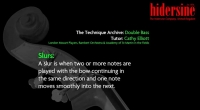= Premier Dealer
A Hidersine Premier dealer is likely to have a wider range and higher stock of Hidersine products in stock.
= Dealer
A Hidersine dealer will stock the majority our Hidersine Product catalogue, but may not have them continually in stock.
It is up to you to contact your nearest stockist prior to making any journey to avoid disappointment.
 The Hidersine Company was owned by Robert Hirt from 1932 and set about building the Hidersine family of rosins into a global success story, with trademarks and patents registered in places such as Australia, New Zealand, Canada and the USA. The company stayed in the Hirt family’s ownership until 1987, when it was bought by Barnes & Mullins Ltd – the musical instrument manufacturer and distributor founded in 1895 in London by Banjo playing, music hall duo Messrs Bowley Barnes and Albert Mullins.
The Hidersine Company was owned by Robert Hirt from 1932 and set about building the Hidersine family of rosins into a global success story, with trademarks and patents registered in places such as Australia, New Zealand, Canada and the USA. The company stayed in the Hirt family’s ownership until 1987, when it was bought by Barnes & Mullins Ltd – the musical instrument manufacturer and distributor founded in 1895 in London by Banjo playing, music hall duo Messrs Bowley Barnes and Albert Mullins.
 Barnes & Mullins had already taken ownership, a few years prior, of the highly regarded ‘AB’ Rosin, designed in the Victorian period by British musician and educationalist, Amy Birch.
Barnes & Mullins had already taken ownership, a few years prior, of the highly regarded ‘AB’ Rosin, designed in the Victorian period by British musician and educationalist, Amy Birch.
After a six month transitional period, production of all Hidersine rosins and preparations was moved from the Hirt family’s original Croydon base, to Oswestry in Shropshire, the home of Barnes & Mullins’ manufacturing company.
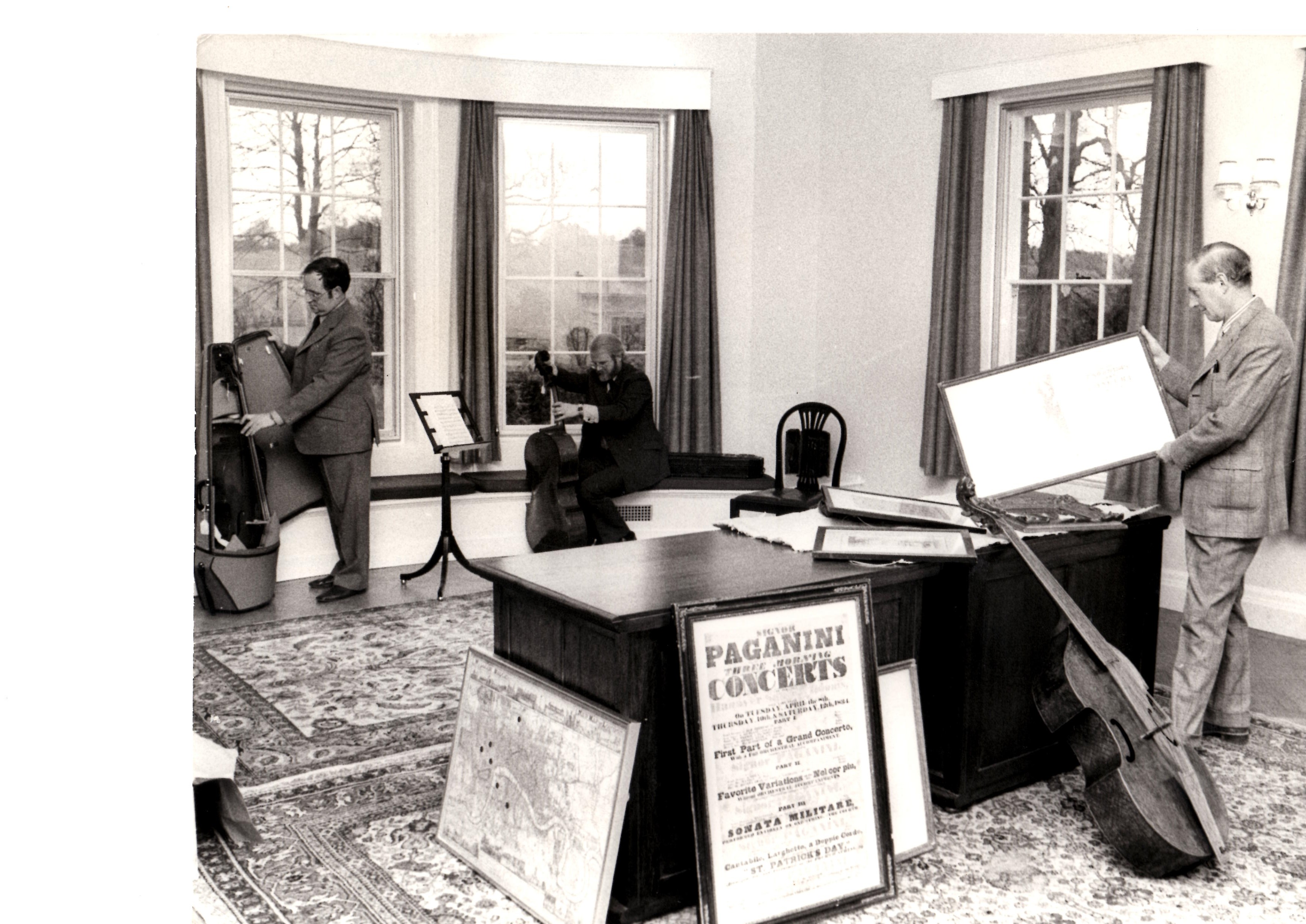 In the late 1980s when W.E.Hill & Sons closed ‘Havensfield’, the Hidersine Company was approached to continue the manufacture of the famous Hill light and dark rosins, keeping true to the centuries-old recipe. With the Hill family’s violin-making featuring in the 17 th century diary of Samuel Pepys, it was imperative to ensure the continued availability of Hill rosin for the thousands of musicians across the globe that chose it to adorn the finest bow hair.
In the late 1980s when W.E.Hill & Sons closed ‘Havensfield’, the Hidersine Company was approached to continue the manufacture of the famous Hill light and dark rosins, keeping true to the centuries-old recipe. With the Hill family’s violin-making featuring in the 17 th century diary of Samuel Pepys, it was imperative to ensure the continued availability of Hill rosin for the thousands of musicians across the globe that chose it to adorn the finest bow hair.
In more recent years, The Hidersine Company has used its considerable experience to source and refine many bowed instrument accessories such as the highly regarded range of Brazilwood, Pernambuco and Carbon Fibre bows, the Oxbury and Maesbury shoulder rests, and a range of class-leading protective cases.
Likewise, Hidersine Bowed Instruments draw upon our years of working with instrument luthiers, learning what is required by players at each level of development. From this experience has come the ESTA-favoured, entry-level Vivente student outfit; the advanced Piacenza student outfit; the degree student’s choice, the Veracini; and many more fine instruments. These models also led us to develop the Hidersine Reserve range of one-off instruments for the connoisseur: hand selected violins and cellos from workshops across Asia that represents both incredible value and exceptional craftsmanship.
Earlier in 1926, Great Britain had seen the beginning of the General Strike, during which Miners, Railwaymen, Transport Workers, Iron and Steel workers, Newspapers and many more trades ceased to function effectively. Plunging the whole country into chaos, unsurprisingly the strike had a very negative impact on business of all kinds.
Things got even worse in October 1929 with the collapse of Wall Street in the USA, which affected every industrialised nation in the world, and set about the Great Depression, seeing the highest ever levels of unemployment in the UK.
As one may expect during severely austere times, music was considered a luxury, and so Francis Hider’s Hidersine Company faced difficult times with many firms failing to pay their bills. Additional to this were the introduction of ‘talkie’ films, and the subsequent demise of a great many cinema orchestras and their rosin-using musicians.
Even Francis’ younger brother Albert - who had been a pioneer in the gramophone record industry and was credited for introducing the first sound-proof cubicles for personal, in-store listening – was also forced to close his previously flourishing music trade business in Earls Court.
The Metropolitan Academy of Music, where Winifred Hider had learnt so much and given so much to, also felt the financial pressure and had to close its doors. Likewise, The Hidersine Company experienced such financial pressure that very quickly, all members of staff were ‘let go’, leaving only Fred Thierauf running the much diminished operation.
Francis had been a wise investor over the years however, having most of his money invested in the shares of a successful oil company based in Mexico. This money, he planned, would be used in case the Hidersine Company ever needed a helping hand. However, just as his investment capital was about to be released, political unrest in Mexico forced the drilling company to flee the country, leaving all its equipment behind, and all of its investors in financial ruin. The Hidersine Company’s financial bail-out had failed.
Despite his very best efforts during the following few years, Francis – now in his mid-60s – could not find an investor willing to take shares in the Hidersine Company, and neither could he find a bank willing to lend money to a business – like so many others - in decline.
![]() So, in November 1932 - just a few months after the birth of Francis’ and Winifred’s first son, Francis Archibald – it was agreed that The Hidersine Company would be sold to Mr Robert Hirt and Charles Robert Bethell – businessmen based in Croydon who sold banjo and drum head vellums and musical instrument strings. (Robert Hirt Logo) The company was renamed as ‘The Hidersine Company Ltd’, and the ever-loyal Fred Thieruaf was kept on as manager. Now with a new lease of life, new ownership and improving national finance, The Hidersine Company Ltd enjoyed 10 years of rejuvenated growth and expansion, resulting in the eventual necessary move of rosin production from Barking to Croydon in 1942.
So, in November 1932 - just a few months after the birth of Francis’ and Winifred’s first son, Francis Archibald – it was agreed that The Hidersine Company would be sold to Mr Robert Hirt and Charles Robert Bethell – businessmen based in Croydon who sold banjo and drum head vellums and musical instrument strings. (Robert Hirt Logo) The company was renamed as ‘The Hidersine Company Ltd’, and the ever-loyal Fred Thieruaf was kept on as manager. Now with a new lease of life, new ownership and improving national finance, The Hidersine Company Ltd enjoyed 10 years of rejuvenated growth and expansion, resulting in the eventual necessary move of rosin production from Barking to Croydon in 1942.
Francis Hider was 69 years of age when he sold The Hidersine Company, and he spent the next few years employed as a dispensing pharmacist.
On February 6th 1943, during periods of heavy aerial bombardment by the German air force, Francis celebrated his 80th birthday with his wife Winifred, first-born son Francis Archibald and second-born son David Claringbould (Claringbould being a Hider family name dating from the 1740s). Now into his 81st year, Francis senior had lost nearly all his energy with doctors diagnosing failing kidney function.
On Easter Sunday, April 25th 1943, Mr Francis Hider passed away at home, peacefully in his wife’s arms with both sons by his side.
(End of abridged memoirs)
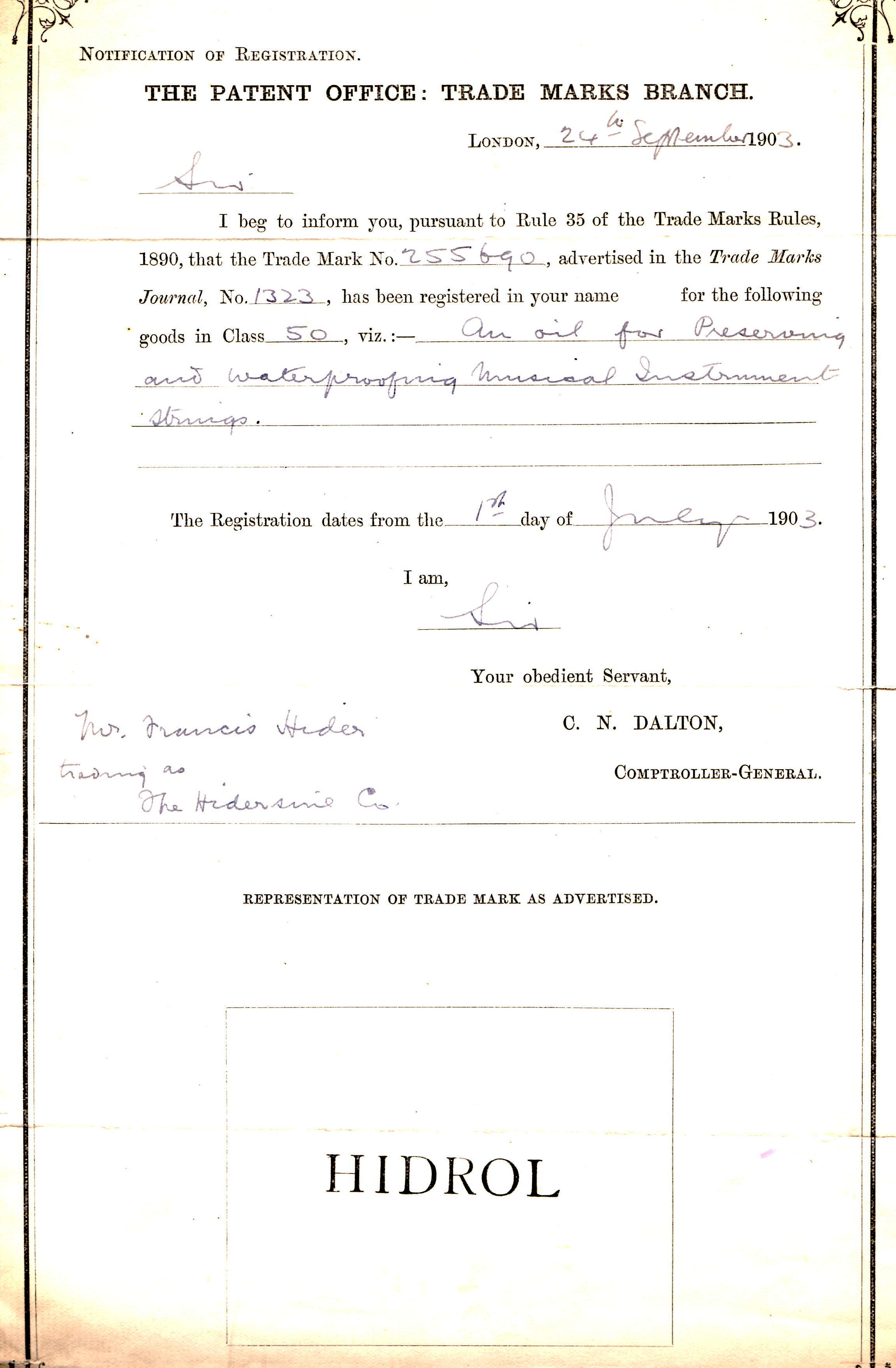
 Throughout the turn of the 20th century and into the pre-war period, Francis continued with musical engagements far and wide, but with an increased emphasis on rosin manufacture, with assistance from his younger brother, James. The Hidersine Company relocated to Hart’s Lane, Barking where Crow’s Tar Distillery allowed Francis to turn one of their buildings into a specialised rosin manufacturing base. It was whilst in this location during 1912 that two more famous products were created and brought to market, namely: Hidrol (Trademark pictured left) – a preservative for strings; and Hidersol, (Trademark pictured right) a unique preparation for cleaning and reviving the varnish of stringed instruments.
Throughout the turn of the 20th century and into the pre-war period, Francis continued with musical engagements far and wide, but with an increased emphasis on rosin manufacture, with assistance from his younger brother, James. The Hidersine Company relocated to Hart’s Lane, Barking where Crow’s Tar Distillery allowed Francis to turn one of their buildings into a specialised rosin manufacturing base. It was whilst in this location during 1912 that two more famous products were created and brought to market, namely: Hidrol (Trademark pictured left) – a preservative for strings; and Hidersol, (Trademark pictured right) a unique preparation for cleaning and reviving the varnish of stringed instruments.
Now, as was to be expected, the previously ubiquitous German-made rosins were becoming somewhat less popular, and this unfortunate reality created an ever greater demand for Hidersine rosins.
This increasing demand caused Francis Hider to relinquish his position with The Royal Opera Orchestra – with whom he played since 1905 – and even after the New Queen’s Hall Orchestra was re-formed post-war, he never returned, instead opting to dedicate his time to the ever-expanding Hidersine Company.
In 1920 the Hidersine Company moved again to accommodate business expansion, this time to Highbridge Road, Town Quay, Barking, where the company became a riverside neighbour to the famous sugar producer, Tate & Lyle. It was during this time that Francis met his future wife, Winifred.
Winifred first saw Francis when she was in her teens and he was playing in the Queen’s Hall where she and her siblings often attended. They referred to the now famed double bassist as “The man who made our resin”. Coming from a musical family in which her father played Violin and Viola in chamber orchestras, Winifred and her brothers had musical tuition from a young age, with Winifred choosing Cello as her favoured instrument.
 During the First World War, while her brothers were serving in the army, Winifred taught herself as much cello as she could, and then in 1919 after the war had ended, she studied at the Metropolitan Academy of Music under Charles Hambourg, nephew of the celebrated Mark Hambourg, with her being made a junior professor in 1922.
During the First World War, while her brothers were serving in the army, Winifred taught herself as much cello as she could, and then in 1919 after the war had ended, she studied at the Metropolitan Academy of Music under Charles Hambourg, nephew of the celebrated Mark Hambourg, with her being made a junior professor in 1922.
Winifred enjoyed very regular musical employment with many orchestras also employing Mr Hider, who by this time was 60 years old. She had become fond of Francis over the course of their many meetings and musical endeavours, and one day on her way to see her tutor Mr Hambourg, she unexpectedly met Francis who presented her with a block of rosin that he said “he had made especially for her”. From this time on the couple were drawn closer together, with their eventual marriage taking place on November 24th 1926 in St Mark’s Church, Forest Gate, Francis aged 63 and Winifred aged 28.
Born in 1863, Francis Hider was the second of four sons born to George William Hider who also had four daughters. Francis’ father, George was a customs officer based in Kent and was a member of the 3rd Sussex Artillery Volunteers where he formed and taught a drum and fife band, as well as being Choirmaster in the parish church.
His father’s musical activities influenced Francis and his brothers as they too joined the drum and fife band and church choir as they came of appropriate age. Francis also showed great artistic promise as a young man, winning awards for both sketches and oil paintings from local academies from the age of 11 onwards.
He rode a penny farthing bicycle and when out riding one day with his bandmate Harry Denne, happened across a double bass in a local shop window. Urged by his friend to purchase the instrument, swiftly an exchange had been agreed for his bicycle, and thus Francis’ bowed instrument journey began.
After finishing school in 1877, Francis began studying to become a dispensing chemist and in 1886 he completed his qualifications, adding M.P.S after his name. Francis then moved to Sandown, Isle of Wight to take over the running of a chemist shop from a recently bereaved widow, but in 1890, as his family had moved to London, he decided to follow them and start his own chemist business at 39 Upton Lane, Forest Gate.
 During late 1890, whilst running his own business in London, Francis also chose to dedicate more of his time to studying the Double Bass, and subsequently developed and manufactured his own Double Bass Rosin. This new Hider rosin was designed to be an improvement on the predominantly German rosins available at the time. Francis initially invented 3 types of Double bass rosin: No.1 – For use in cold temperatures; No.2 – For use in medium temperatures; No.3 – For use in warm temperatures.
During late 1890, whilst running his own business in London, Francis also chose to dedicate more of his time to studying the Double Bass, and subsequently developed and manufactured his own Double Bass Rosin. This new Hider rosin was designed to be an improvement on the predominantly German rosins available at the time. Francis initially invented 3 types of Double bass rosin: No.1 – For use in cold temperatures; No.2 – For use in medium temperatures; No.3 – For use in warm temperatures.
This newly developed range of double bass rosin was adopted by many professional players of the day, and the product’s acclaim soon led to the creation of ‘F.Hider’s Improved Violin Resin’.
After the success of his rosin and his increased musical activity, Francis started to feel uneasy with life in a chemist’s shop, so he sold the business and moved back into the family home in Forest Gate, where he studied Double Bass full-time, under James Haydn Waud, one of Guildhall School of Music’s very first Double Bass professors.
 Francis soon found work deputising for professional double bassists around London, joining Robert Newman and (Sir) Henry Wood’s Queen’s Hall Orchestra in 1895. (The Queens Hall was the home of ‘The Proms’ from 1893 to 1941 and would see performances from such leading lights as Claude Debussy, Edward Elgar, Maurice Ravel and Richard Strauss). Just three years later, as a member of the same orchestra, Francis was honoured to play at Windsor Castle for Queen Victoria under the conductorship of the celebrated Henry Wood.
Francis soon found work deputising for professional double bassists around London, joining Robert Newman and (Sir) Henry Wood’s Queen’s Hall Orchestra in 1895. (The Queens Hall was the home of ‘The Proms’ from 1893 to 1941 and would see performances from such leading lights as Claude Debussy, Edward Elgar, Maurice Ravel and Richard Strauss). Just three years later, as a member of the same orchestra, Francis was honoured to play at Windsor Castle for Queen Victoria under the conductorship of the celebrated Henry Wood.
It was during this time of study and professional performance that Francis’ father, George – now retired from Her Majesty’s Customs – helped his son continue to manufacture the Rosins in the kitchen of their family home. Their success grew, and on 20th August 1897 the Hidersine Company was founded with Francis listed as sole director and his father appointed as manager.
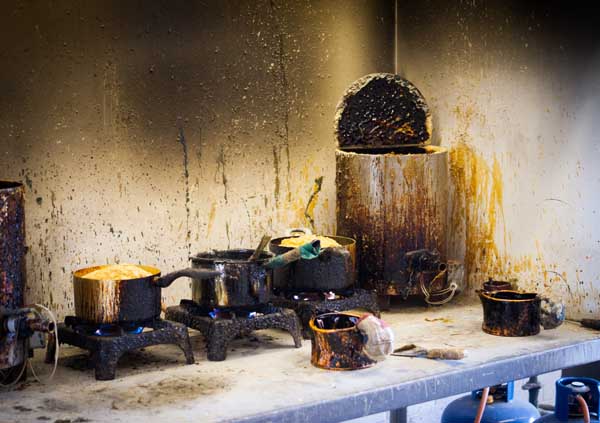 Our world famous Hidersine Rosin is made from a carefully selected blend of wax and pine resin. This special blend is the reason we are the premier choice of rosin amongst musicians.
Our world famous Hidersine Rosin is made from a carefully selected blend of wax and pine resin. This special blend is the reason we are the premier choice of rosin amongst musicians.
In order to create our rosin, we first heat our carefully selected blend of ingredients, allowing the wax and resin to melt and mix together.
Once the rosin is to temperature it is then poured into a smaller pouring jug and then poured directly into the mould which has already been placed on our Hidersine branded cloth.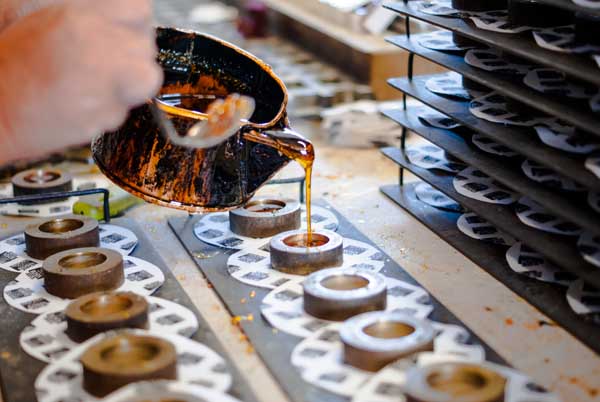
Whilst the rosin is still in the mould, they are flamed to remove any surface imperfections.
Our rosin is still made in the same way, using the same recipe that was first developed by Francis Hider, almost 100 years ago. In doing so, we maintain a handmade, authentic and artisan connection to our product and to the musicians who use it.
Our goal is that every Hidersine instrument is setup to the very highest standard, and surpasses your greatest expectations, ensuring that you will love to play your Hidersine instrument straight out of the box.
We take great pride in our setup process, we painstakingly adjust, tweak and test our instruments prior to being shipped out to customers. Each instrument is closely inspected in an effort to ensure that the instrument is at its very best when it arrives with the player.
Our Stringed Instrument Specialists are highly trained and have a keen eye for detail, which is essential to achieve a superior quality setup that only The Hidersine Company can deliver.

